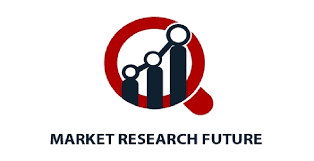Overview
The automotive fuel cell market is witnessing steady growth as the automotive industry pivots toward zero-emission technologies. Fuel cells, which convert hydrogen into electricity, are increasingly viewed as a sustainable alternative to conventional internal combustion engines and battery-electric vehicles, particularly for long-range and heavy-duty applications. Growth is being driven by rising environmental concerns, stringent emission regulations, advancements in hydrogen refueling infrastructure, and government incentives for clean mobility solutions. Key trends include the adoption of proton exchange membrane (PEM) fuel cells, increased collaboration between automakers and hydrogen suppliers, and technological improvements enhancing fuel cell efficiency and durability.
Segmentation
- By Product Type
- Proton Exchange Membrane Fuel Cells (PEMFC)
- Solid Oxide Fuel Cells (SOFC)
- Molten Carbonate Fuel Cells (MCFC)
- By Vehicle Type
- Passenger Cars
- Light Commercial Vehicles (LCVs)
- Heavy Commercial Vehicles (HCVs)
- Buses & Coaches
- By End-User
- Individual Consumers
- Fleet Operators
- Government & Municipal Authorities
- By Geographic Region
- North America
- Europe
- Asia-Pacific
- Latin America
- Middle East & Africa
Key Players
Major companies in the automotive fuel cell market are investing heavily in R&D, partnerships, and production scaling:
- Toyota Motor Corporation – A pioneer in hydrogen fuel cell technology with its Mirai sedan and strong global presence in hydrogen mobility projects.
- Hyundai Motor Company – Known for the NEXO fuel cell SUV and initiatives to develop commercial hydrogen vehicles.
- Honda Motor Co., Ltd. – Offers the Clarity Fuel Cell and collaborates extensively on hydrogen infrastructure expansion.
- Ballard Power Systems – Specializes in fuel cell modules for buses, trucks, and trains, with global OEM partnerships.
- Nikola Corporation – Focused on hydrogen-powered trucks and integrated hydrogen refueling solutions.
Regional Analysis
- North America – Growth is supported by government grants, California’s hydrogen infrastructure program, and commercial fleet adoption.
- Europe – Strong regulatory push for zero-emission vehicles, with Germany, France, and the UK investing heavily in hydrogen mobility.
- Asia-Pacific – Japan and South Korea lead with national hydrogen strategies, while China is rapidly expanding fuel cell bus and truck fleets.
- Latin America – Early-stage adoption, mainly in pilot projects for public transportation.
- Middle East & Africa – Hydrogen production initiatives in countries like Saudi Arabia are expected to foster future adoption.
Latest Developments (2025)
By 2025, advancements in high-power density fuel cells and reduced platinum content are expected to lower production costs. Several automakers are collaborating to standardize hydrogen refueling protocols. Renewable hydrogen production from solar and wind power is expanding, improving sustainability. Governments are increasing funding for green hydrogen projects, while long-haul transport sectors such as trucking and shipping are emerging as key adopters.
Conclusion
The automotive fuel cell market is positioned as a critical pillar of the future mobility ecosystem, especially in applications requiring long range, fast refueling, and high payload capacities. With technology costs decreasing and infrastructure expanding, fuel cell vehicles are expected to complement battery-electric vehicles in achieving global decarbonization goals. The market’s trajectory suggests significant growth opportunities, particularly in commercial transport and regions with strong hydrogen policies.
Explore More Related Reports:
Headlight Control Module Market
Hydrogen Fuel Cell Train Report Market
Fuel Cell Commercial Vehicle Market


